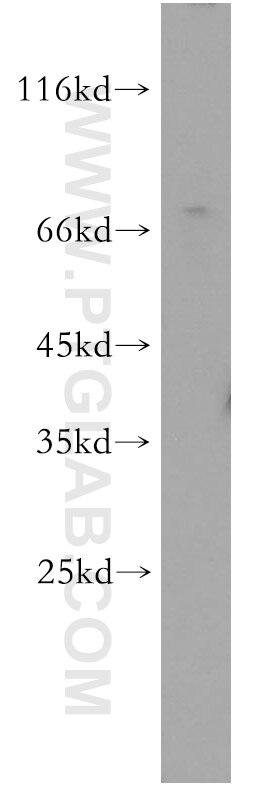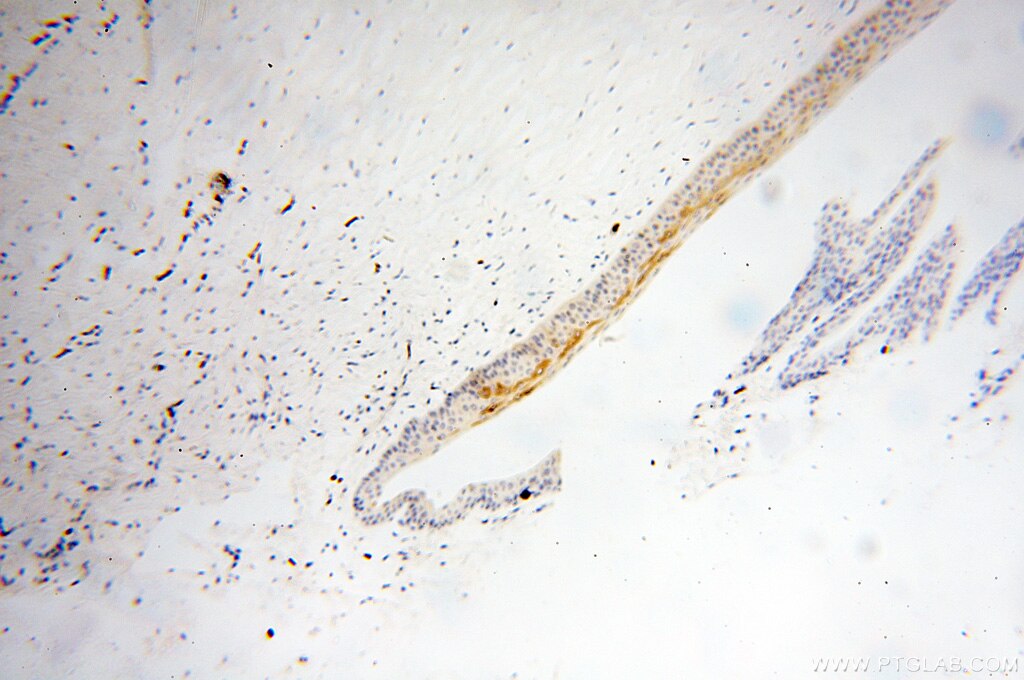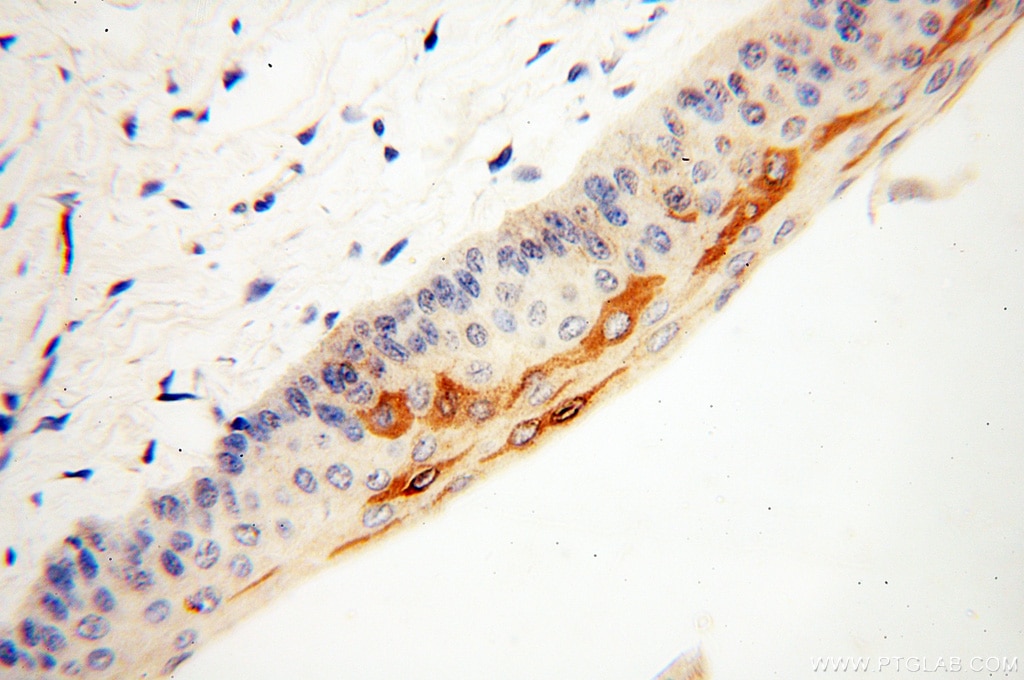Anticorps Polyclonal de lapin anti-TULP1
TULP1 Polyclonal Antibody for WB, IHC, ELISA
Hôte / Isotype
Lapin / IgG
Réactivité testée
Humain, rat, souris
Applications
WB, IHC, ELISA
Conjugaison
Non conjugué
N° de cat : 18971-1-AP
Synonymes
Galerie de données de validation
Applications testées
| Résultats positifs en WB | cellules Y79, tissu cérébral humain, tissu rétinien de souris |
| Résultats positifs en IHC | tissu oculaire humain il est suggéré de démasquer l'antigène avec un tampon de TE buffer pH 9.0; (*) À défaut, 'le démasquage de l'antigène peut être 'effectué avec un tampon citrate pH 6,0. |
Dilution recommandée
| Application | Dilution |
|---|---|
| Western Blot (WB) | WB : 1:500-1:2000 |
| Immunohistochimie (IHC) | IHC : 1:20-1:200 |
| It is recommended that this reagent should be titrated in each testing system to obtain optimal results. | |
| Sample-dependent, check data in validation data gallery | |
Applications publiées
| WB | See 1 publications below |
Informations sur le produit
18971-1-AP cible TULP1 dans les applications de WB, IHC, ELISA et montre une réactivité avec des échantillons Humain, rat, souris
| Réactivité | Humain, rat, souris |
| Réactivité citée | souris |
| Hôte / Isotype | Lapin / IgG |
| Clonalité | Polyclonal |
| Type | Anticorps |
| Immunogène | TULP1 Protéine recombinante Ag5598 |
| Nom complet | tubby like protein 1 |
| Masse moléculaire calculée | 489 aa, 55 kDa |
| Poids moléculaire observé | 70 kDa |
| Numéro d’acquisition GenBank | BC032714 |
| Symbole du gène | TULP1 |
| Identification du gène (NCBI) | 7287 |
| Conjugaison | Non conjugué |
| Forme | Liquide |
| Méthode de purification | Purification par affinité contre l'antigène |
| Tampon de stockage | PBS with 0.02% sodium azide and 50% glycerol |
| Conditions de stockage | Stocker à -20°C. Stable pendant un an après l'expédition. L'aliquotage n'est pas nécessaire pour le stockage à -20oC Les 20ul contiennent 0,1% de BSA. |
Informations générales
TULP1, also known as RP14, LCA15, and TUBL1, is a member of the tubby-like protein (TULP) family. TULP1 is expressed exclusively in the retina and is essential for the transport of rhodopsin from its site of synthesis in the inner segments through the connecting cilium to the outer segments(PMID: 17620573). Mutations in TULP1 are associated with Retinitis pigmentosa 14 and Leber congenital amaurosis-15(PMID: 17620573, 17962469).
Protocole
| Product Specific Protocols | |
|---|---|
| WB protocol for TULP1 antibody 18971-1-AP | Download protocol |
| IHC protocol for TULP1 antibody 18971-1-AP | Download protocol |
| Standard Protocols | |
|---|---|
| Click here to view our Standard Protocols |






